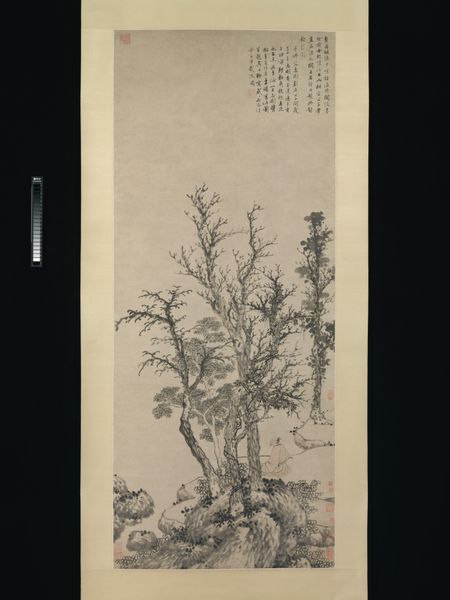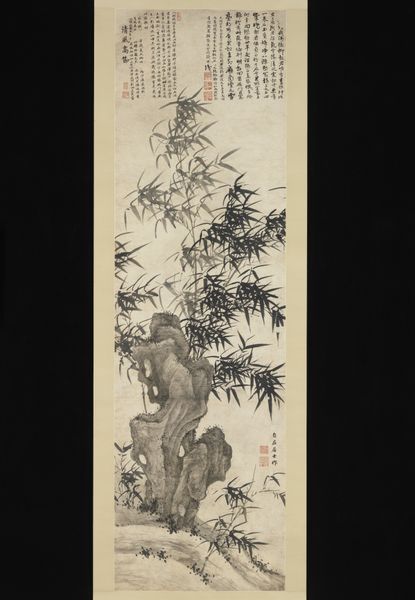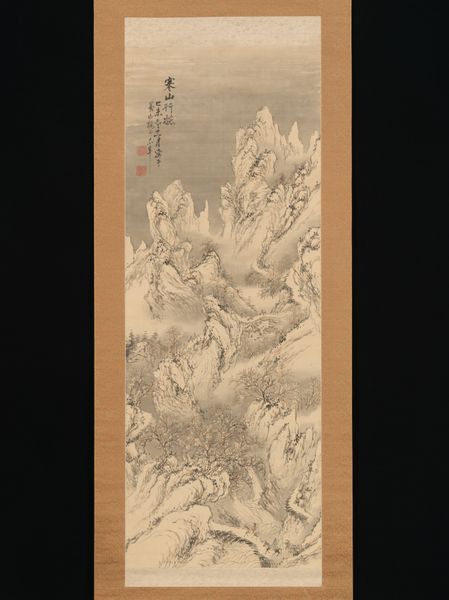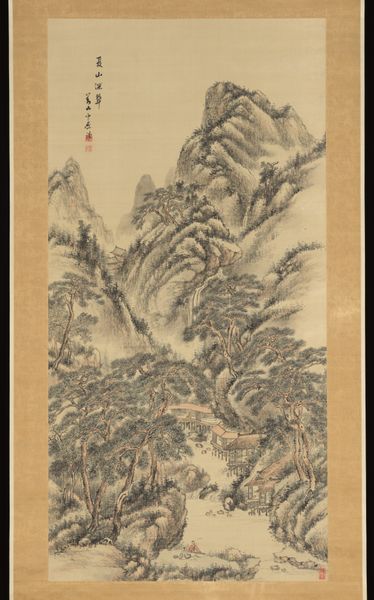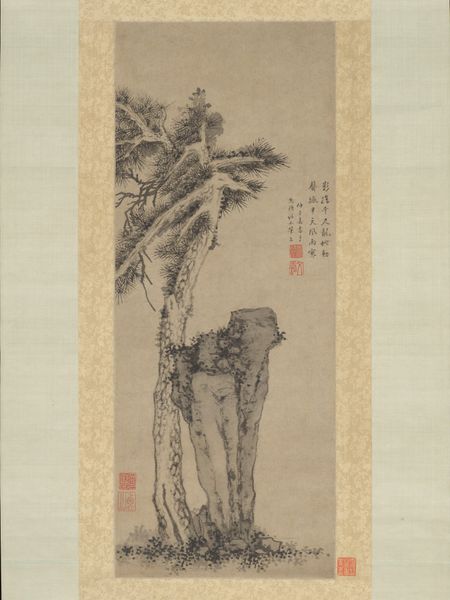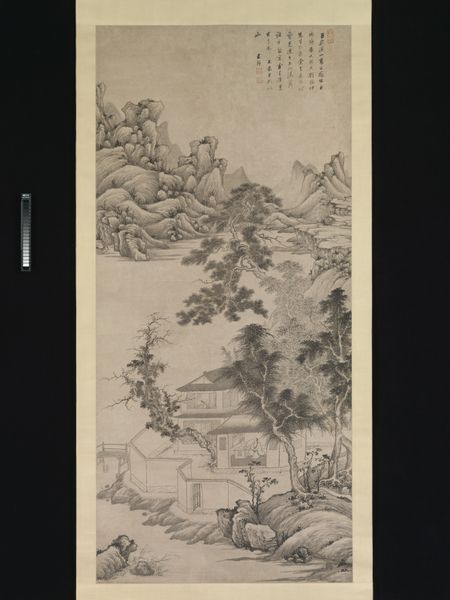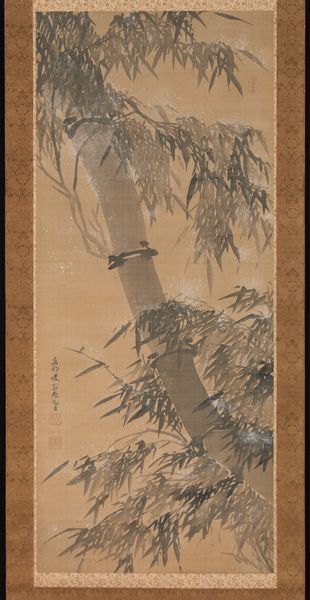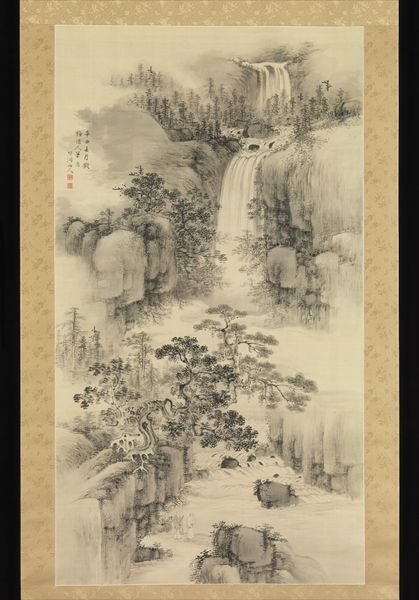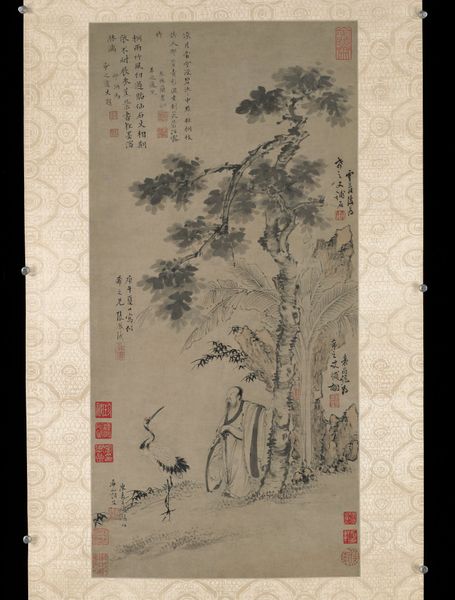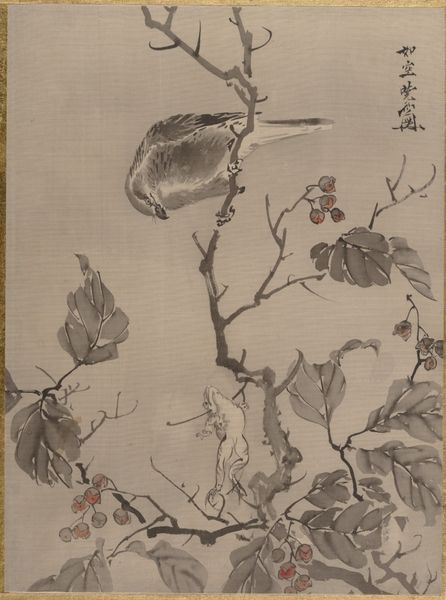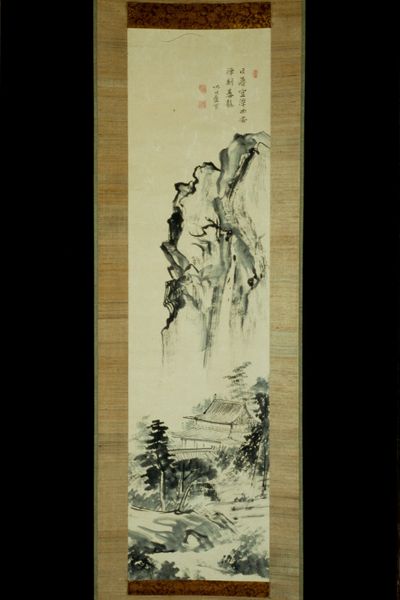
tempera, painting, watercolor, ink
#
tempera
#
painting
#
asian-art
#
landscape
#
ukiyo-e
#
watercolor
#
ink
#
mountain
#
calligraphy
Dimensions: Image: 42 3/4 × 17 5/8 in. (108.6 × 44.8 cm) Overall with mounting: 72 5/8 × 24 7/16 in. (184.5 × 62 cm) Overall with knobs: 72 5/8 × 26 7/8 in. (184.5 × 68.3 cm)
Copyright: Public Domain
Curator: Look at this striking scroll. Yokoi Kinkoku created this ink and watercolor work, "Spring Cleaning," sometime between 1767 and 1833. The calligraphy is lovely, but it’s the domestic scene that immediately draws me in. Editor: It feels muted. There’s a real calmness in the understated color palette. Even though it’s representational, it's so focused on capturing a certain light, or maybe just the soft greys and browns of a cool morning. The ink lines, they’re almost delicate. Curator: I appreciate your observation about the mood; this work lives at the intersection of artistic and societal convention. Works of this type usually adhere to specific social, religious, and cultural contexts; the setting depicts laborers in a village in the act of everyday labor and cleaning. It reminds me of an interest in the representation of ordinary people and ordinary moments within the Ukiyo-e movement, a movement which focused mostly on woodblock prints of urban settings. Editor: Ah, but consider the composition itself. The ascending landscape – the buildings huddled near the bottom and giving way to towering mountains at the top – guides the viewer’s eye upward in a deliberate rhythm. The lines themselves evoke a sense of organic harmony between human existence and the natural world. Do you feel as though those buildings give structure to the natural backdrop of rocks? Curator: I can agree, as far as it goes. The artist does structure the mountain through his strategic placement of human-made things and using ink gradation. The way Kinkoku positions those little human figures going about their business tells a broader tale. His utilization of the artistic style serves to portray not just individuals but, ideally, the cultural fabric and principles of Japanese life at that time. It transcends the pictorial quality of an everyday event into the political, social, and institutional landscape of history. Editor: And I, perhaps, see more purely an expression of visual artistry. How Kinkoku contrasts texture to suggest atmospheric perspective – from detailed roofs below to abstracted peaks above – and uses minimal pigment, to distill a very specific sensation: the particular feel of the dawn. Curator: Well, that’s certainly one lens through which we might appreciate this scroll. Editor: Indeed. A fascinating piece for each of our interests.
Comments
No comments
Be the first to comment and join the conversation on the ultimate creative platform.
